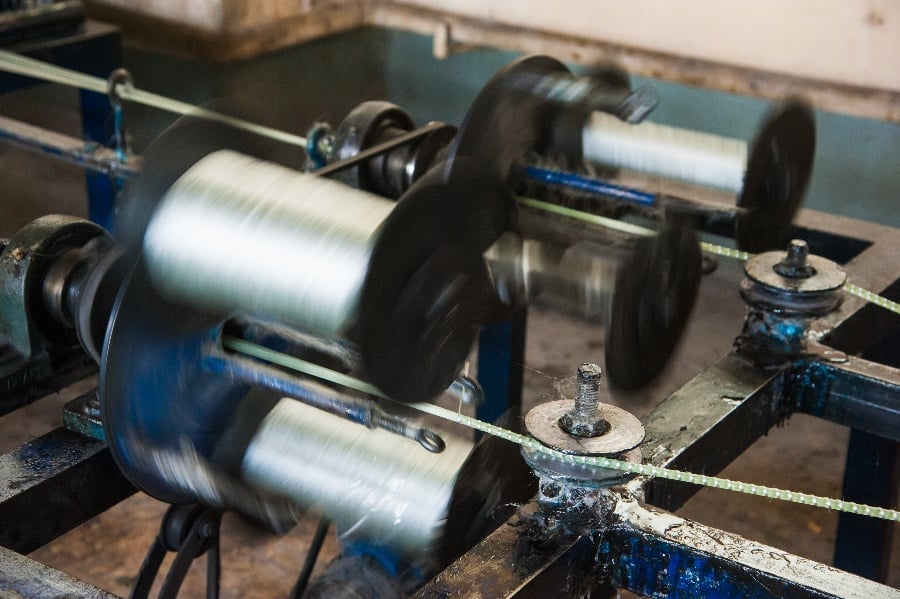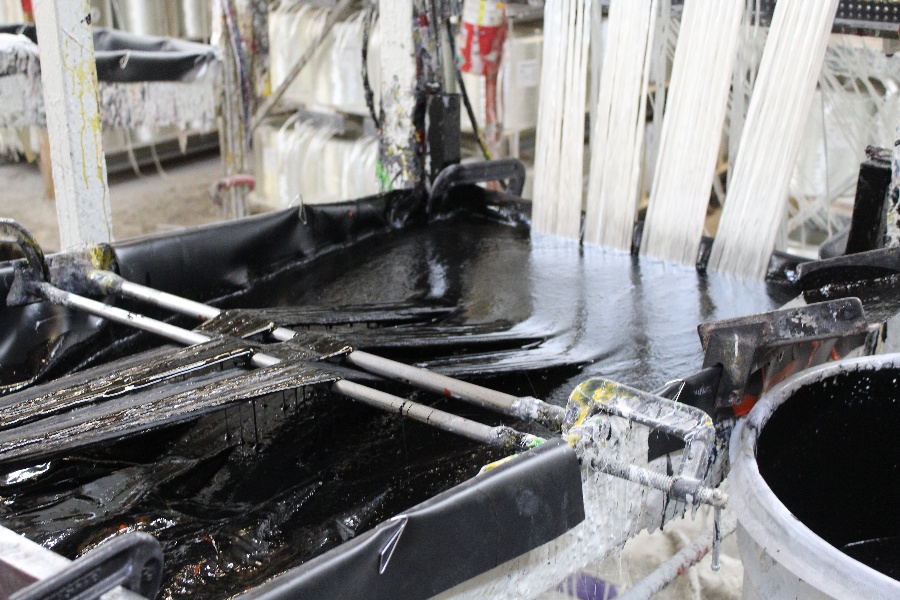Pultrusion is an automated closed-molding process used to manufacture fiber reinforced polymer (FRP) composites. By pulling fiberglass rovings through a resin bath or impregnator until saturated, then hardening from the heated steel pultrusion die, the resulting end-product is a strong, lightweight FRP.
Unlike other means of production, pultrusion allows for more resins and reinforcements to be incorporated in the production stages. Because each adds unique and desirable properties to the finished product, end products vary from regular FRP molded products in numerous ways:
- Pultruded products are stronger and have greater tensile strength and rigidity.
- They can take on profile shapes that can’t be achieved through regular means.
- They allow for larger products.
For more information on pultrusion and how Tencom uses it as their primary manufacturing process, read our guide here.
Current Trends
As companies realize the benefits of pultruded products, pultruded FRPs are increasingly being utilized across a range of industries.
In a report published by market researcher Lucintel, the global pultrusion market is expected to reach an estimated $3.4 billion by 2024 at a CAGR of 4.0% from 2019 to 2024, indicating a global shift toward these products.
Pultruded products are currently being used across a range of industries including construction, architecture, electrics and mass transit, but it is aerospace that has been and is continuing to be revolutionized by FRP composites.
Benefits of Pultrusion in Aerospace
Pultruded FRP composites are crucial to aerospace innovation due to their excellent performance properties and low cost.
In an industry where structural stability, durability and lightweight materials are imperative, FRPs are the obvious choice.
Some of the key benefits of using pultruded FRPs in aerospace are as follows:
- Lightweight. Pultruded composites are lighter than aluminum and wood and weigh up to 75% less than steel. This lowered weight makes for easy and inexpensive transport and lowers fuel consumption when in the air.
- Structurally Sound. Although pultruded products are significantly lighter than their competitors, they are comparable in strength to steel. Pultruded products are lighter in weight and allow for increased customization without sacrificing material strength. This makes them an ideal candidate for use in aerospace.
- Durable. FRP composites are extremely durable when compared to traditional materials. They have an extremely high heat tolerance and do not corrode or degrade under extreme conditions. This durability simplifies maintenance and increases the sustainability of FRP composites.
- Low Cost. In addition to contributing to lower fuel consumption and maintenance costs, manufacturing pultruded parts costs far less than FRP molded products and parts from traditional materials. By pairing its low cost with pultrusion’s automated and efficient production process, pultrusion fast becomes the most economically viable option for aerospace parts manufacturing.
Applications in Aerospace
Looking at the benefits of pultrusion, it’s no surprise that aerospace engineers are turning toward pultruded FRPs to meet their needs.
Being low cost, structurally sound and durable whilst more than halving the weight of traditional materials, pultruded FRPs like those from Tencom are leading the way in aerospace innovation.
Due to their versatility, current applications of FRPs in aerospace are extremely varied and range from the manufacturing of interior elements to load-bearing structural pieces.
In commercial and military aircraft, FRP composites are being used in a variety of ways including in luggage bins, trolleys, radomes, brackets and even more substantial pieces like the fuselage, and within space travel and exploration, FRP composites are contributing to the innovation of lightweight satellites and rockets.
It’s clear that FRP composites are increasingly being used to fulfill the stringent requirements of aerospace without breaking the bank, and are doing so with great results.
Looking to the Future
With the renewed push toward space exploration we are currently experiencing, it’s inevitable that FRPs will continue to drive innovation in this field.
Additionally, increased passenger traffic across the globe will serve to strengthen and drive advancements in air travel with an expected focus on pultruded FRPs. Predictions like these that advocate for the increased utilization of pultruded products are reflected in market research for this field.
Aerospace and defense are the current leaders in the high growth composite materials market due to the strict performance requirements of space and aircraft.
This is corroborated in research undertaken by Markets and Markets revealing that the aerospace composites market is expected to grow from $24.49 billion in 2016 to $42.97 billion by 2022, at a CAGR of 9.85% between 2017 and 2022.
Currently, the US is the largest consumer of aerospace composites and this position is expected to strengthen further as the field continues its rapid growth in product manufacture and composite technologies.
For products requiring superior dimensional stability, tolerance to specific parameters, low maintenance, high durability and lower manufacturing costs, pultruded composites are the answer.
With their flexible application and constant innovation, the only limit to FRPs in aerospace is human creativity.
















